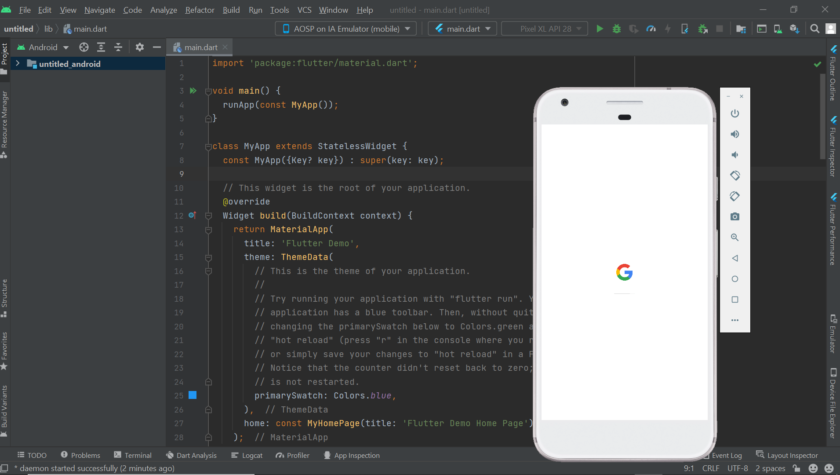There are a plethora of frameworks available for app development. It can be either native or cross-platform development.
This plethora of options makes it confusing which one to choose (if you are looking forward to becoming a developer or you are already a developer and in the process of choosing which tech to learn next).
Here I am going to share 5 reasons why to use flutter for app development.
But What is Flutter?

Flutter is Google’s UI toolkit for building beautiful, natively compiled applications for mobile, web, desktop, and embedded devices from a single codebase.
flutter.dev
1. Faster App(s) Development

Yes! The above meme stands true. You can use a single code base for Andriod, iOS, web, and other embedded devices with Flutter.
Thus your development period is reduced exponentially as you need not have to write different code bases for different platforms.
A perfect cross-platform should fulfill two requirements: give a high-quality user experience (smooth animations, native UI elements that don’t slow down) and be cost-effective to develop. As stated above, as the development period is shortened drastically, the cost involved would reduce subsequently.
2. Expressive Flutter UI Widgets
Flutter uses a fast, and high-performance rendering engine. As a result, an amazing platform has been created that assists developers of all skill levels in creating apps that follow acceptable design patterns and best practices.
You can forget about standards, inconsistencies, or technical flaws caused by programming language flaws. Flutter provides attractive and customizable widgets that enhance the look and feel of Flutter apps.
Everything in Flutter apps is widgets. It can be either stateful or stateless widgets. These widgets are modern and very expressive.
Another amazing fact is that you need not have to have CSS skills to beautify and bring life to your UI widgets.
3. No CSS/Javascript Skills Required for App Development
Widgets are the building blocks of a Flutter application’s user interface. Its layering enables creating applications of any complexity simple. You can utilize ready-made widgets from Material-UI or develop unique components based on fundamental widgets.
With Flutter, it is also feasible to freely deal with animation and gesture processing. As a result, you can do quick work with high-level widgets while still being able to add/redefine deeper layers. So, say goodbye to CSS!
JavaScript is not everyone’s piece of cake. Not everyone loves JavaScript. If you are one of them, Flutter is something to go to save your life.
4. Achieve Native Performance
Many developers doubt the performance of cross-platform frameworks like Flutter.
Official documentation of Flutter guarantees next to native performance in any platform. Because a Flutter app is written directly in machine code, any performance issues will be avoided during interpretation.
In contrast to most other cross-platform frameworks, a Flutter application will eventually be indistinguishable from a native program because it does not rely on any intermediate code representations or interpretation.
5. Dart Programming Language
Flutter is written in the Dart programming language. It is relatively new and consequently so is the Flutter framework.
For those who have already worked with such popular languages as C#, Java, and TypeScript, it will be easy to switch to Dart and start using it right away.
There are plenty of React Native and native app developers, thus competition is very tight. As Dart is comparatively a newer language, there are not as many Flutter developers as other frameworks.
Its age gives a competitive edge if you are planning to become a new developer.
